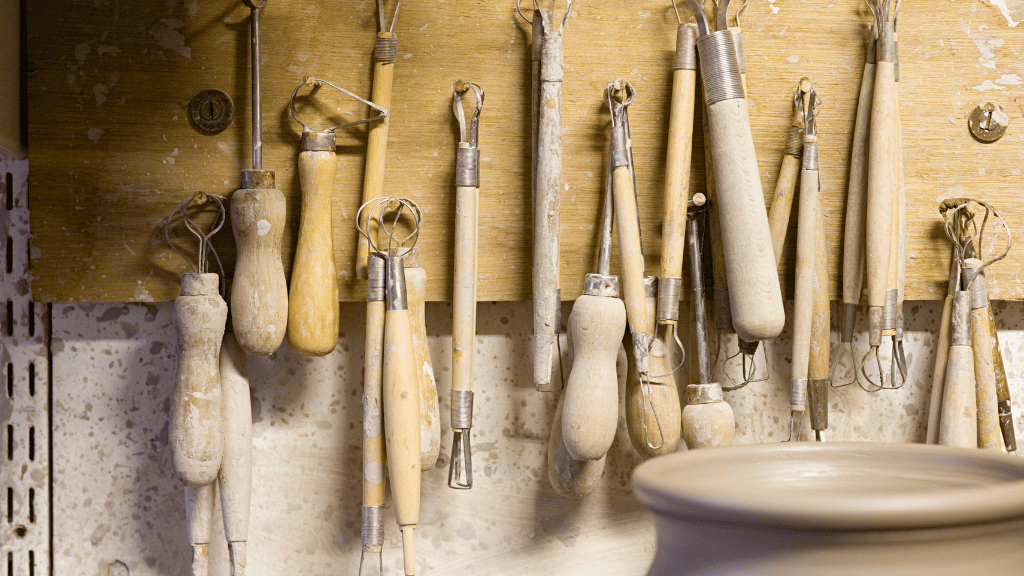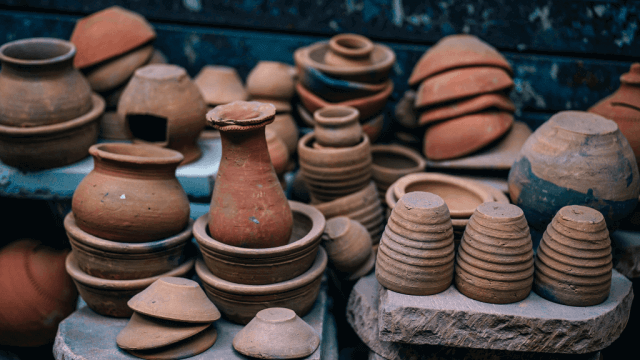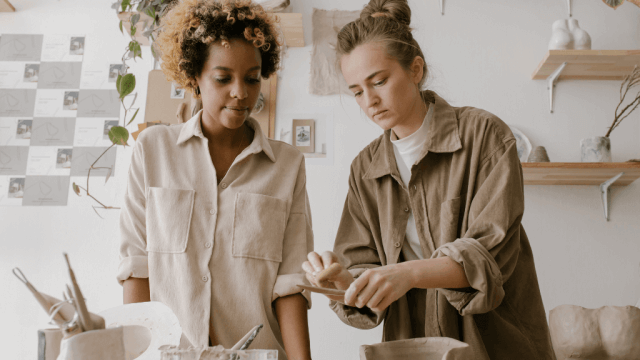Pottery tools can vary in price, ranging from a few dollars for basic items like wooden ribs or trimming tools to $200 or more for advanced equipment like pottery wheels.
The cost depends on the quality and type of tool, as well as where you buy them.
Basic Pottery Tool Costs
Basic pottery tools usually include items like wooden ribs, trimming tools, various shaped sponges, needle tools, wire tools, and brushes.
These tools typically cost between $1 to $10 each, depending on their quality and where they are purchased.
You can also find beginner pottery tool kits for around $20 to $30 that include essential items, which can save you money when starting out.
Advanced Pottery Tool Costs
More advanced pottery tools, such as pottery wheels, kilns, and extruders, often have a higher price tag.
The cost of these tools can range from $200 to over $1,000, depending on the brand, quality, and features.
These tools are important for serious ceramic artists or professional potters and can be a significant investment.
Pottery Wheel Cost
A pottery wheel is a crucial tool for creating beautiful and symmetrical pieces.
The price of a pottery wheel depends on whether you choose a manual or electric wheel, as well as the features and the brand.
Manual wheels can range from $200 to $400, while electric wheels cost anywhere from $400 to $1,500 or more.
Kiln Cost
A kiln is used for firing pottery projects and comes in various sizes and types, such as electric, gas, and wood-fired kilns.
The prices for these kilns can range from $500 for small tabletop models to over $2,000 for large, professional-grade kilns.
Costs can be even higher for specialized gas and wood-fired kilns.
Where to Buy Pottery Tools
Pottery tools can be purchased at local ceramic supply shops, art stores, online retailers, or even second-hand from other potters or social media forums.
The source and location where you purchase your tools can heavily influence the pottery costs you incur.
Purchasing pottery tools online can sometimes be more cost-effective due to the variety of brands and sale promotions.
However, don’t forget to consider shipping fees and import taxes when ordering from international sellers.
Factors Affecting Pottery Costs
Several factors influence the total pottery costs, such as the quality and materials of the tools, the brand, and the complexity of the equipment.
Generally, high-quality tools produced by well-known brands tend to be more expensive.
Ceramic artists may also require tools with specific features or functionality, which can further increase costs.
To save money, you can start by investing in essential basic tools, and then gradually upgrade or expand your collection as needed.
Determining What Tools You Need
Before you start shopping for pottery tools, it’s essential to determine what kind of pottery project you wish to undertake.
This will help you decide which tools are necessary for your work.
For beginners, consider starting with a basic pottery toolkit that includes essential items such as a sponge, needle tool, wire tool, and wooden rib.
As you develop your skills, you can invest in more specialized tools, like a pottery wheel or an extruder.
Quality vs Price
When it comes to pottery tools, it’s often true that you get what you pay for.
High-quality tools can make a noticeable difference in your pottery work and can last for years with proper care.
However, for beginners or hobbyist potters, more affordable tools may suffice.
Consider your budget, the frequency of use, and how important durability is to you before making a purchase.
DIY Pottery Tool Options
If you’re on a tight budget, or if you want to explore your creativity, you can craft some pottery tools using items you already have on hand or by finding materials at your local hardware store.
Homemade pottery tools may not have the same durability as commercial products, but they can be an inexpensive way to experiment with different techniques and textures.
Examples of DIY pottery tools include shaping tools made from old silverware, texture tools crafted from found objects or even homemade pottery wheels using repurposed materials.
Maintaining Your Pottery Tools
To ensure your pottery tools last as long as possible and function optimally, it’s essential to maintain them properly.
Cleaning clay off tools after each use and storing them in a clean, dry space will help prevent rust and damage.
Some metal tools may require occasional sharpening or oiling to maintain their cutting edge and prevent corrosion.
Investing time in regular maintenance will protect your investment and keep your tools in optimal working condition.
FAQ Section
Here are some frequently asked questions and their direct answers related to the costs and considerations for buying pottery tools.
What are the essential tools for a beginner potter?
A beginner potter’s essential tools include a sponge, needle tool, wire tool, wooden rib, various shaped sponges, and a trimming tool.
A basic pottery tool kit can serve as a cost-effective starting point.
How can I save money on pottery tools?
To save money on pottery tools, consider purchasing beginner tool kits, looking for sales and promotions online, buying second-hand tools or creating simple DIY tools using materials you already have or can find at a hardware store.
Do I need a pottery wheel to start with pottery?
A pottery wheel is not essential for beginners, and you can create hand-built pottery pieces using techniques like coil, slab, and pinch methods.
However, a pottery wheel can be helpful in advancing your skills or working with more complex designs.
Are electric pottery wheels better than manual ones?
Electric pottery wheels provide more consistent and controlled rotation speeds, which can be helpful for beginners and make the pottery process more efficient.
Manual wheels require more physical effort but can offer a traditional, hands-on experience and be more affordable.
Is a small tabletop kiln sufficient for a beginner potter?
A small tabletop kiln can be sufficient for a beginner potter who wants to fire small-scale projects or test pieces.
However, for larger projects or more consistent firing results, a larger, standalone kiln might be a better investment.











